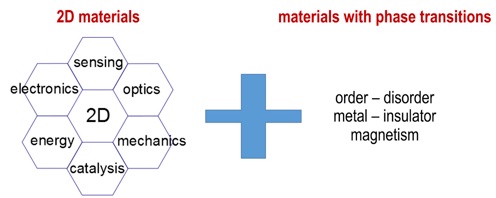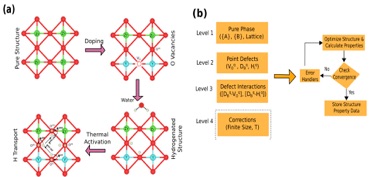Research and Development Staff Scientist
Center for Nanophase Materials Sciences
Oak Ridge National Laboratory
Tel: 1-865-574-1999
Fax:1-865-574-1999
Email: ganeshp AT ornl.gov


Research and Development Staff Scientist
Center for Nanophase Materials Sciences
Oak Ridge National Laboratory
Tel: 1-865-574-1999
Fax:1-865-574-1999
Email: ganeshp AT ornl.gov

Research Synopsis:
Dr. Panchapakesan Ganesh performs research in theoretical and computational material physics and chemistry using a range of methodologies. He has a broad research interest in several areas as listed below, with a particular emphasis on understanding the influence of defects and disorder on material functionality, for designing improved materials for energy storage & conversion, as well as quantum information science applications. Recently, he is also involved in understanding dynamical processes underlying defect-creation using electron-beams.
His work involves heavy computing to study the electronic structure and derived physical/chemical properties of novel materials using an ab initio approach involving quantum-mechanics, thermodynamics and statistical physics.
His current goal at Oak Ridge National Laboratory (ORNL) is to understand the fundamental principles governing emerging material properties at the nanoscale due to point- and extended-defects in bulk, thin-film and interfacial geometries as found in energy materials (batteries, supercapacitors, pseudocapacitors, fuel cells), ferroic materials (oxide heterostructures, ferroelectrics, multiferroics), catalytic systems (oxide or graphene supported nanoparticles) and layered materials (layered Fe-pnictide superconductors, topological quantum-materials and other novel ferroic layered materials).
He has experience in developing scalable-high-throughput and genetic-algorithm based computational materials search methods, and multi-scale modeling capabilities (e.g. using reactive force-fields such as ReaxFF for molecular reactions, effective-Hamiltonian methods to describe oxide phase transitions, cluster-expansion methods to treat substitutional order/disorder in 3D & 2D systems and Hubbard-model parameters to study strongly correlated physics), to enable large-scale simulations.
Before joining ORNL, he worked for 3 years, at the Carnegie Institution for Science, on technologically important solid-state materials, shedding new light on the workings of relaxor materials as piezoelectrics, predicting improved new ferroelectrics, and novel phase-transitions in magnetic-materials for electronic storage and memory applications.
Earlier, he graduated with a doctorate from the physics department at Carnegie Mellon University where he demonstrated the role of geometric frustration in designing improved amorphous metal alloys and predicted phase transitions in supercooled liquid silicon.
Current Research Areas:
 Materials for Electrical Energy Storage and Conversion
Materials for Electrical Energy Storage and Conversion
 Topological (& Correlated) Quantum Materials and their
Topological (& Correlated) Quantum Materials and their
Interfaces
 Ferroic and Multiferroic Oxides and Layered Materials
Ferroic and Multiferroic Oxides and Layered Materials
 Materials Discovery via Computational
Materials Discovery via Computational
High-Throughput and Machine Learning approaches
Past Research Areas:
 Interface Directed Molecular Self-Assembly
Interface Directed Molecular Self-Assembly
 Fe-based Superconductors
Fe-based Superconductors
 High Pressure phase-Transitions in Solids
High Pressure phase-Transitions in Solids
 Fluid Mediated Catalysis on Oxide Nanoparticle Surfaces
Fluid Mediated Catalysis on Oxide Nanoparticle Surfaces
© Copyright, P. Ganesh, ORNL, Wednesday, August 28, 2019










